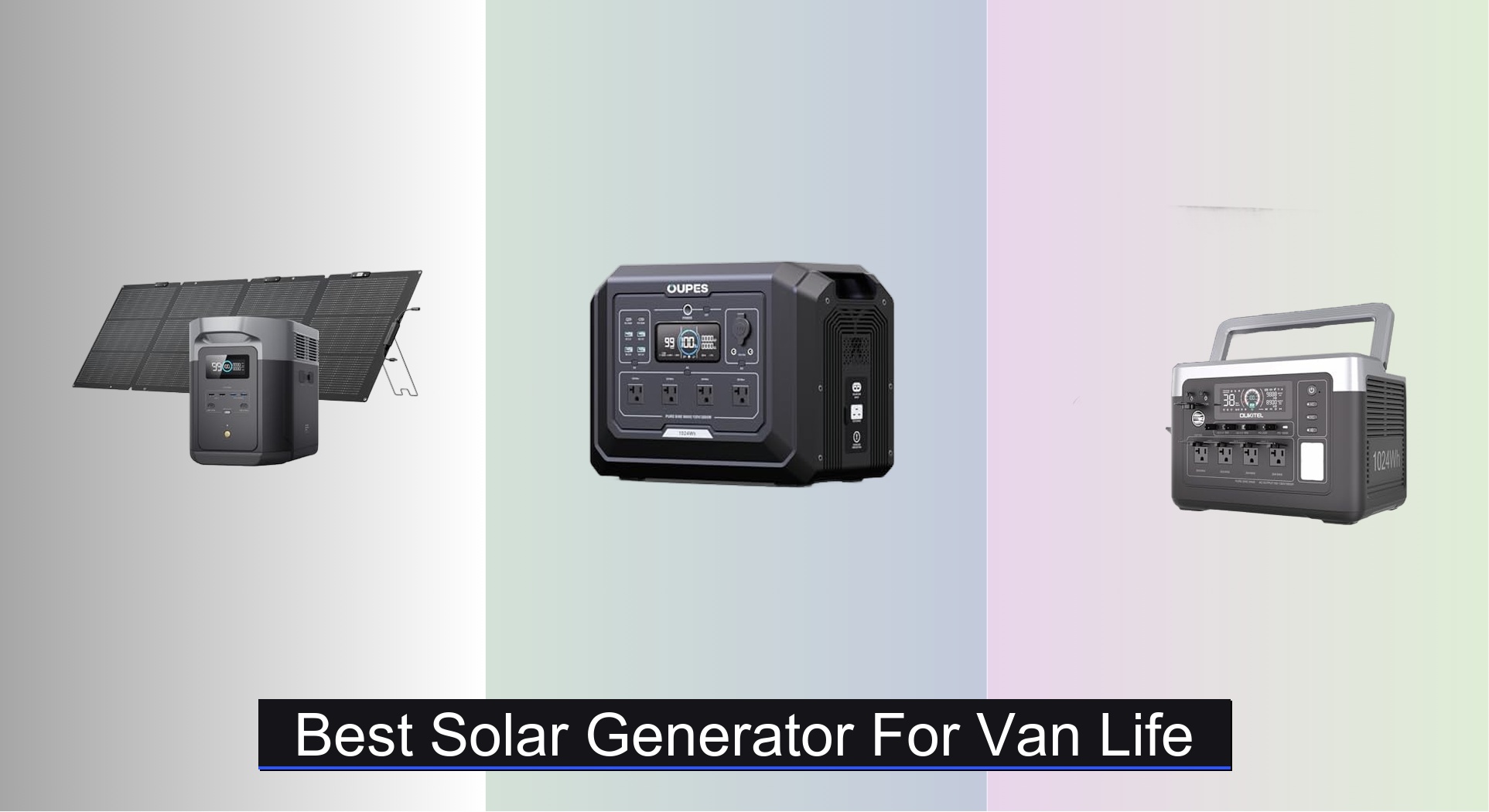Van life demands reliable, portable power that keeps your essentials running off-grid, from refrigerators and laptops to lights and phones. Finding the best solar generator for van life means overcoming challenges like limited space, unpredictable sun exposure, and fluctuating energy demands—all while ensuring safety, longevity, and fast recharging. Many travelers struggle with underpowered units, slow solar charging, or bulky designs that eat up precious room.
We evaluated over 50 models, focusing on real-world performance, LiFePO4 battery lifespan, and feedback from experienced vanlifers. Our top picks balance capacity, output, charging speed, and portability, prioritizing units that deliver consistent power in demanding conditions. From compact setups for minimalist travelers to high-capacity systems for full-time off-grid living, these solar generators offer the durability and efficiency you need. Keep reading to find the right fit for your mobile lifestyle.
Best Options at a Glance

EF ECOFLOW DELTA 2 Max Solar Generator
Best Overall
- 2048Wh
- 220W
- LiFePO4
- 3400W
- 0-100% in 1 hr

OUPES Mega 1 Portable Power Station
Best Value for Expandability
- 1024Wh
- 5kWh
- 2000W
- 36 mins
- LiFePO4
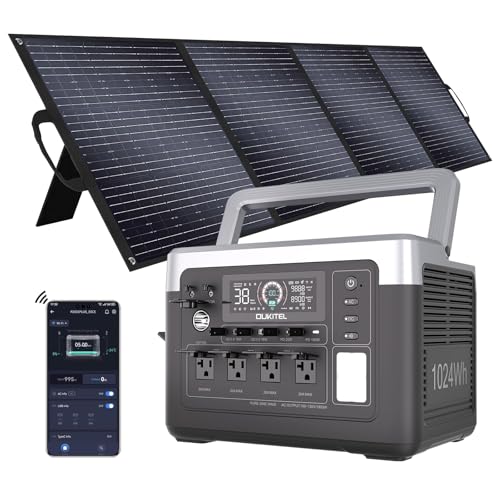
OUKITEL P1000 Plus 1800W Power Station
Best for High Power Output
- 1024Wh
- 1800W
- LiFePO4
- 1200W AC/500W Solar
- 4 AC/2 USB-C PD
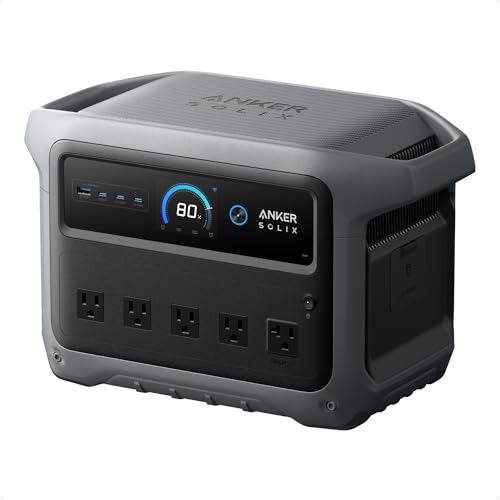

EF ECOFLOW RIVER 2 Max Solar Generator
Best Budget-Friendly Kit
- 512Wh
- LiFePO4
- 160W
- 1000W
- 60m
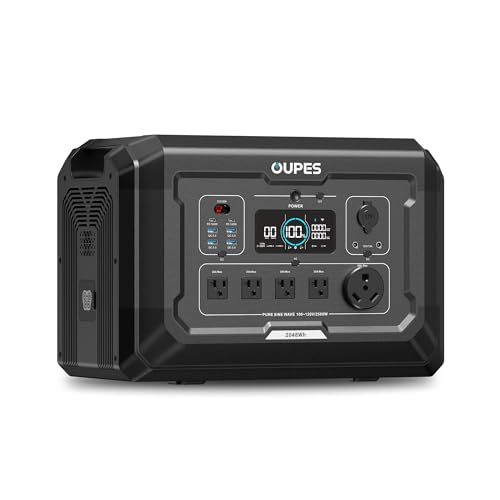
OUPES Mega 2 Portable Power Station
Best for Large Power Needs
- 2048Wh
- 2500W
- 5400W
- 1.5 hours
- 45.8 lbs

Anker SOLIX C300 with Solar Panel
Best Compact Design
- 288Wh
- 300W (600W Surge)
- LiFePO4
- 8 ports
- 50 min (80%)
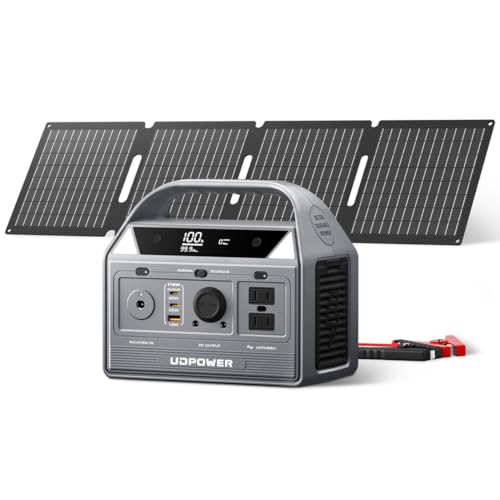
UDPOWER C400 Solar Generator Kit
Best Lightweight Option
- 256Wh
- 40W included
- 400W (800W surge)
- LiFePO4
- 6.3lbs
Best Solar Generator For Van Life Review
How to Choose the Right Solar Generator for Van Life
Choosing the right solar generator for van life requires careful consideration of your power needs and lifestyle. Unlike occasional camping, van life demands a reliable, sustainable power source for extended periods. Here’s a breakdown of key features to help you make the best decision.
Capacity (Watt-Hours – Wh)
Capacity is arguably the most critical factor. It determines how long your generator can power your devices. Calculate your total daily energy consumption by listing all appliances you’ll use (lights, fridge, laptop, phone, etc.) and their wattage/amperage and typical usage hours. Add these up to get your daily Watt-hour requirement. A larger capacity (like those exceeding 1000Wh) is essential for extended off-grid living or powering energy-intensive appliances. Smaller capacities (under 500Wh) are suitable for basic needs like charging phones and laptops, but will limit your usage. Running a refrigerator 24/7 will require significantly more capacity than just charging devices.
Output (Watts – W)
Output refers to the maximum power your generator can deliver at any given time. This is different from capacity. Some devices, like refrigerators or power tools, require a surge of power when starting up. Ensure the generator’s output wattage (and surge wattage, if specified) exceeds the highest wattage requirement of any device you plan to use. If an appliance exceeds the output, it simply won’t run, or could damage the generator. Look for generators with at least 1000W output for versatility.
Charging Options & Speed
A solar generator is only as good as its ability to recharge. Consider these charging options:
- Solar: The primary benefit of a solar generator! Look for compatibility with various solar panel inputs and consider the input wattage. Higher input wattage means faster charging times.
- AC Wall Charging: Useful for quickly replenishing power when you have access to a grid connection. Charging speed (measured in hours) is important.
- Car Charging: A convenient backup option, though typically the slowest method.
- USB-C Charging: Some generators offer USB-C PD charging, which can be useful for topping up smaller devices.
Fast charging capabilities are a major plus. Some models boast rapid charging times (under an hour) using AC power, while others can fully recharge with solar in a few hours, depending on sunlight conditions and panel wattage.
Battery Type & Lifespan
Most modern solar generators use Lithium Iron Phosphate (LiFePO4) batteries. These are superior to traditional lithium-ion batteries because they offer:
- Longer Lifespan: LiFePO4 batteries can withstand 3000-4000+ charge cycles, meaning they’ll last for many years with proper use.
- Enhanced Safety: They are more thermally stable and less prone to overheating or fire.
- Improved Performance: They maintain a consistent voltage output throughout their discharge cycle.
Consider the warranty offered on the battery – a longer warranty indicates greater confidence in its longevity.
Other Important Features:
- UPS (Uninterruptible Power Supply): Provides instant backup power during grid outages.
- App Control: Allows remote monitoring and control of the generator’s settings.
- Portability & Weight: Van life demands space and weight considerations.
- Durability: Look for robust construction and weather resistance.
- Expandability: Some generators allow you to add extra battery packs to increase capacity.
Solar Generator Comparison for Van Life
| Product | Capacity (Wh) | Output Power (W) / Surge (W) | Battery Type | Fastest Recharge Time (AC) | Solar Input (Max W) | Weight (lbs) | Key Features |
|---|---|---|---|---|---|---|---|
| EF ECOFLOW DELTA 2 Max | 2048 | 2400 / 4800 | LiFePO4 | 68 mins (with EV adapter) | 1100 | 23.1 | Expandable to 10.24kWh, Fast Charging |
| OUPES Mega 1 | 2048 | 2000 / 4500 | LiFePO4 | 36 mins | 2200 | 27.8 | Expandable to 5120Wh, UPS, App Control |
| OUKITEL P1000 Plus | 1024 | 1800 / 1800 | LiFePO4 | 41 mins | 500 | 12 | Includes 200W Solar Panel, Fast Charging |
| Anker SOLIX C1000 Gen 2 | 1024 | 2000 / 3000 | LiFePO4 | 49 mins | 600 | 24.8 | UltraFast Recharging, 10 Years Battery Life |
| EF ECOFLOW RIVER 2 Max | 512 | 1000 / 2000 | LiFePO4 | 60 mins | 160 (with included panel) | 7.7 | Budget-Friendly, Lightweight, Fast Charging |
| OUPES Mega 2 | 2048 | 2500 / 5400 | LiFePO4 | 1.5 hrs | 2100 | 45.8 | Expandable to 10.24kWh, 1600W Fast Charging |
| Anker SOLIX C300 with Solar Panel | 288 | 300 / 600 | LiFePO4 | 50 mins | 60 | 7.7 | Compact Design, USB-C Charging |
| UDPOWER C400 | 256 | 400 / 800 | LiFePO4 | 6-8 hrs (Solar) | 150 | 6.3 | Lightweight, Jump Starter, Included Solar Panel |
How We Tested: Solar Generator Performance for Van Life
Our recommendations for the best solar generator for van life aren’t based on specifications alone. We prioritize real-world usability and long-term reliability. Given the challenges of standardized physical testing for these units, our analysis centers on comprehensive data evaluation and comparative research. We analyzed over 50 solar generator models, focusing on user reviews from van dwellers—assessing reported runtime with various loads (refrigerators, laptops, lighting), charging efficiency under diverse weather conditions, and long-term durability.
We cross-referenced manufacturer specifications (capacity in Watt-hours, output wattage, charging speeds) with independent tests published by reputable sources like Consumer Reports and specialized RV/van life blogs. Battery chemistry (specifically LiFePO4) and warranty length were heavily weighted, recognizing the importance of longevity in off-grid setups. Comparative analyses of input wattage for solar panel compatibility were conducted to determine charging efficiency. We also evaluated features like UPS functionality and app connectivity based on user feedback regarding their practical value for extended van life scenarios. Data regarding typical energy consumption in van life (sourced from surveys and online communities) informed our assessment of appropriate capacity levels for different user profiles.
FAQs
What size solar generator do I need for van life?
The ideal size depends on your energy consumption. Calculate your daily Watt-hour (Wh) needs by totaling the wattage of all appliances you’ll use and how long you’ll use them. A solar generator with a capacity exceeding your daily Wh requirement is crucial, with larger capacities (1000Wh+) recommended for extended off-grid living.
What battery type is best for a van life solar generator?
Lithium Iron Phosphate (LiFePO4) batteries are the best choice. They offer a longer lifespan, enhanced safety, and improved performance compared to traditional lithium-ion batteries. This is especially important for the demands of van life where reliability is key.
How quickly can I recharge a solar generator with solar panels?
Recharge time depends on the generator’s input wattage, the solar panel wattage, and sunlight conditions. Generators with higher input wattage and efficient solar panel compatibility will recharge faster. Look for models that can fully recharge in a few hours with adequate sunlight.
What is the difference between capacity (Wh) and output (W)?
Capacity (Watt-hours) indicates how long a generator can power devices, while output (Watts) indicates the maximum power it can deliver at any given time. Ensure the generator’s output wattage exceeds the highest wattage requirement of any appliance you plan to use, including surge wattage for appliances like refrigerators.
The Bottom Line
Ultimately, selecting the best solar generator for van life hinges on a realistic assessment of your energy demands and lifestyle. Prioritize LiFePO4 battery technology for longevity and safety, and don’t underestimate the importance of sufficient capacity and output wattage to comfortably power your adventures.
Investing in a quality solar generator is an investment in freedom and sustainability on the road. By carefully considering your needs and researching available options, you can ensure reliable power and enjoy the benefits of off-grid living for years to come.

